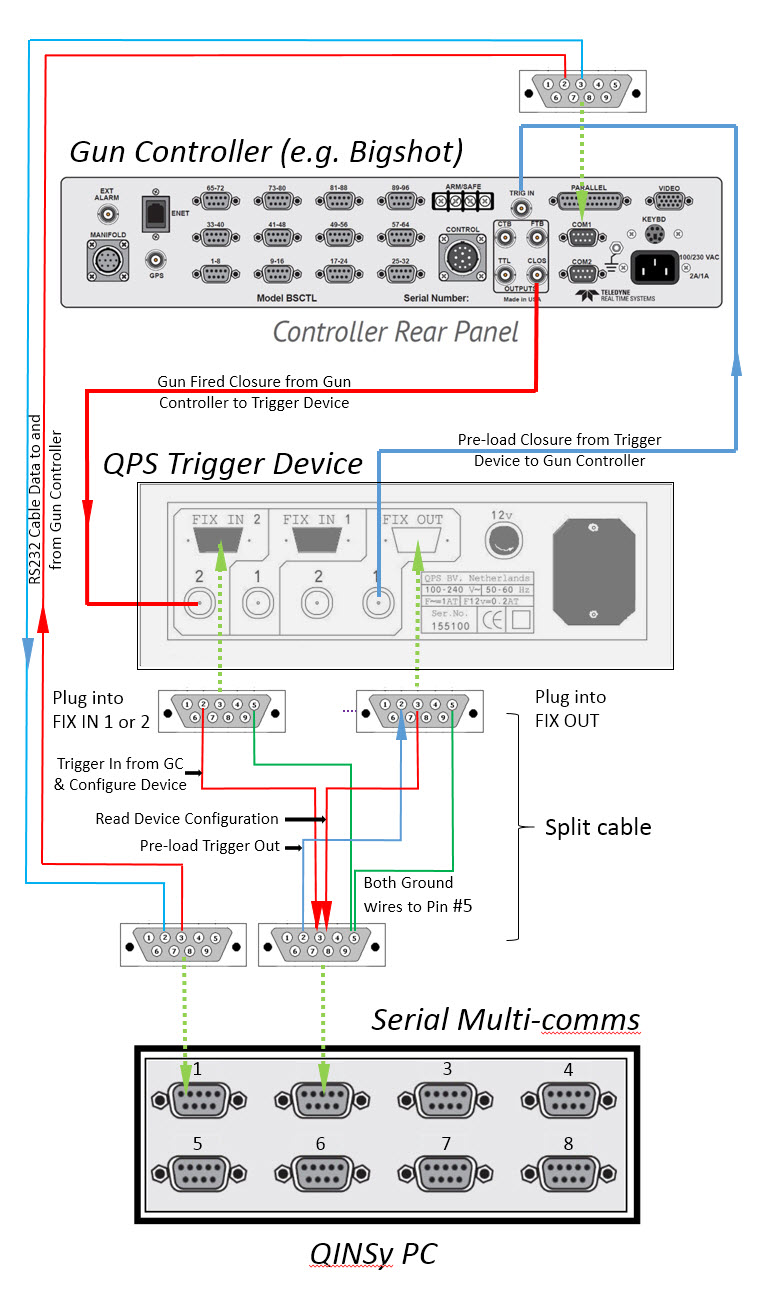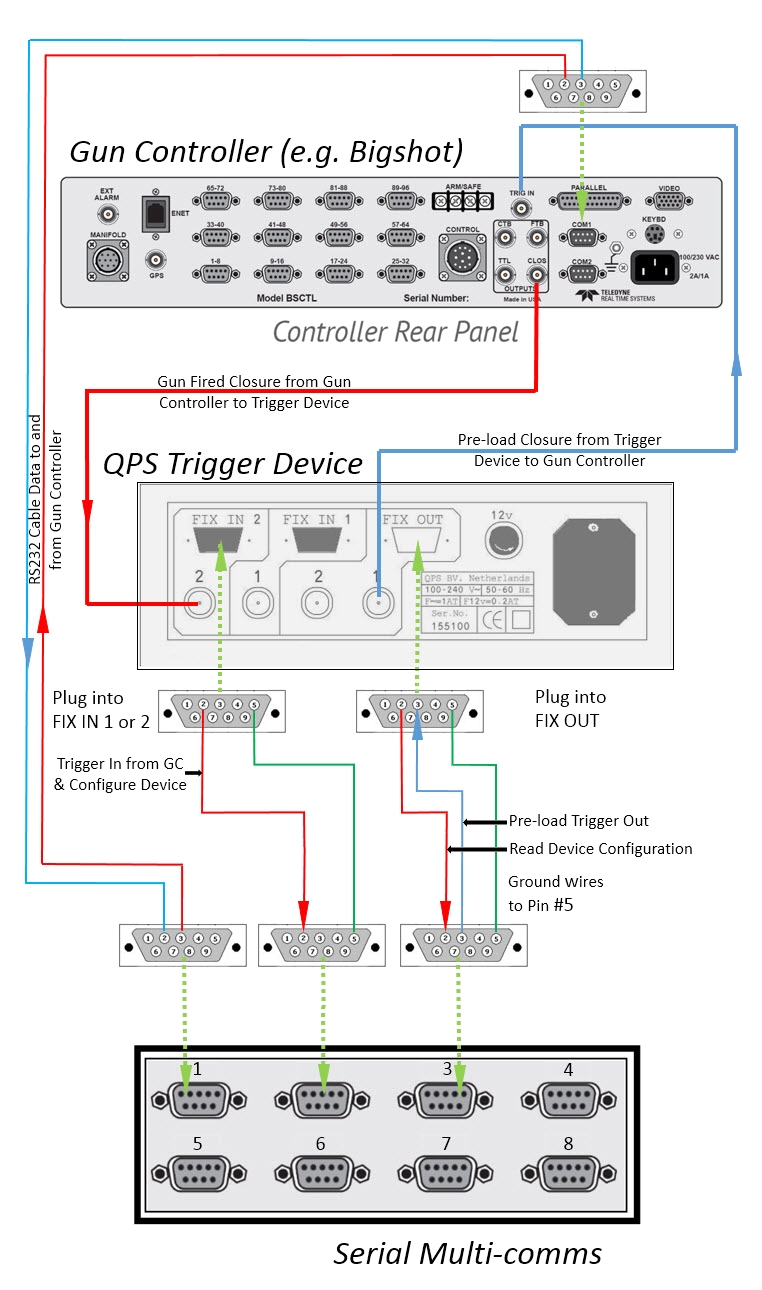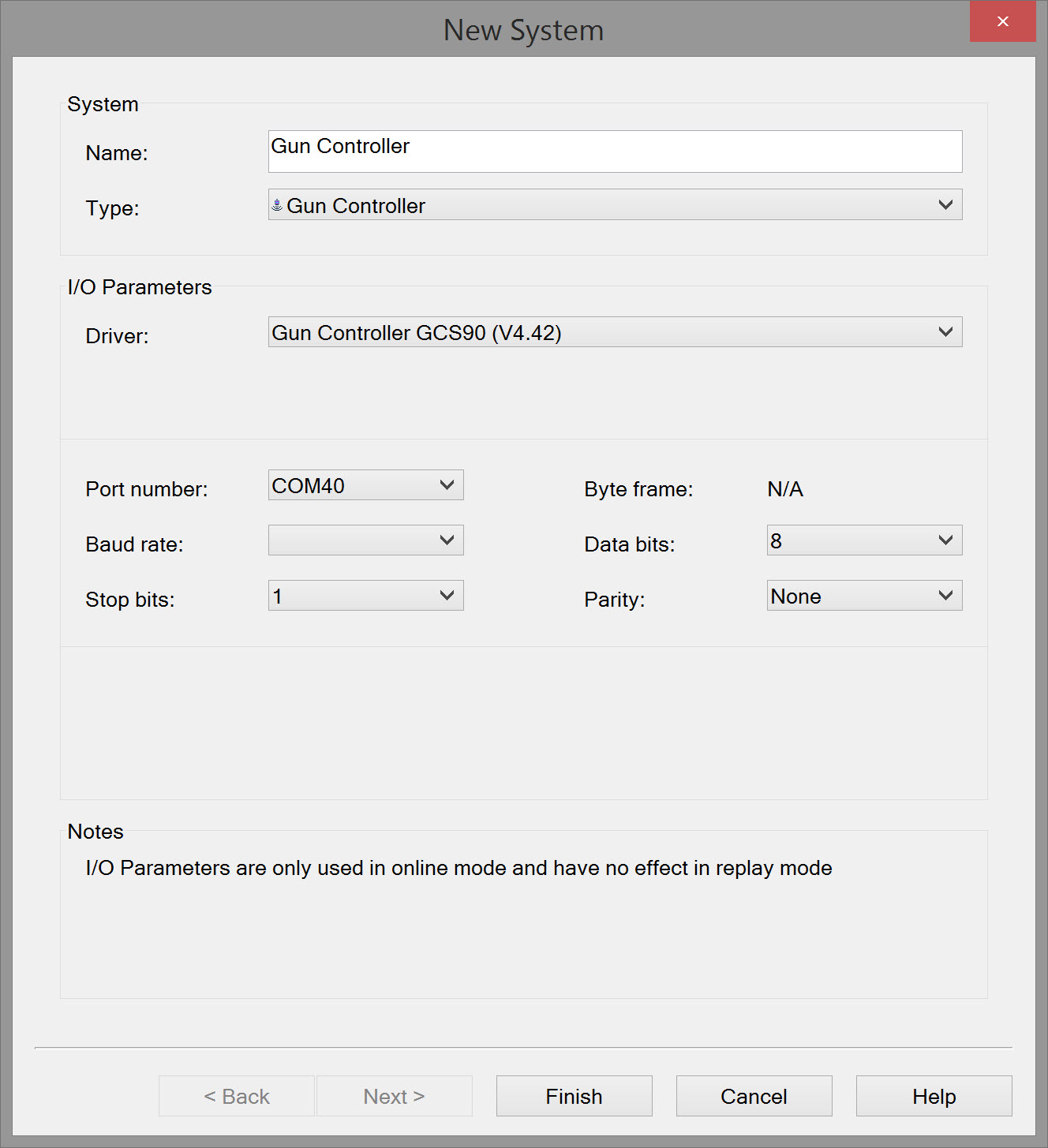Gun Controller GCS90 (V4.42) - 21
Description
A Gun Controller synchronizes all aspects of firing one or more gun arrays, the purpose being to fire the 'shot' at predefined distance intervals along the sail line. An air-gun array consists of sub-arrays called strings, each string containing multiple individual guns. An array often involves between 18 and 48 guns, although as many as 100 guns an array is sometimes used.
Each air gun in an array has a slightly different delay between the reception of a trigger signal by the air gun and the actual time of firing of the air gun. For each air gun, this measured delay is utilized as the characteristic time delay for the air gun for the next firing sequence. At each firing sequence upon the receipt of a master fire command, the gun controller transmits a trigger signal to each air gun only after the expiration of a trigger delay time appropriate to that specific air gun. By appropriate selection of the individual trigger delay times, the gun controller insures that the individual air guns are fired precisely in a predetermined sequence. Since the characteristic time delay for any individual air gun is measured at each shot, these time delays utilized by the gun controller are very precise.
This driver issues the gun firing trigger (master fire command) based on a pre-load time. To do this a trigger (CLS or TTL) is sent to the Controller via a QPS Trigger Device a short time before the gun should fire at precisely the time when it reaches the shot-point. A return trigger (CLS or TTL) is sent to Qinsy to initiate the fix that records the instant the gun array actually fired. Qinsy also decodes gun status information messages received from the gun controller.
The Navigation Interface Protocol used for this driver is GCS90. Any gun controller compatible with this protocol can be interfaced to Qinsy.
This driver is generally used in conjunction with a QPS produced hardware device, i.e. Trigger Device Mk3, 4, 5, or 6.
Driver Information
Driver | Gun Controller GCS90 (V4.42) | Interface Type | Serial | Driver Class Type | |
|---|---|---|---|---|---|
No | Input / Output | Executable | DrvGunGCS90.exe | ||
Related Systems |
| ||||
Related Pages | |||||
Interfacing Notes
For the exchange of messages a standard RS-232 serial interface is provided for communication between the Gun Controller system and Qinsy.
When combining a Qinsy 'Preload Fix Out' with a 'Trigger Fix In' from a gun controller the cable should be split so that it can be connected to two serial ports, or, when using the QPS Trigger Device, use two separate cables.
The following diagram details the necessary wiring when using the QPS Trigger Device.
The reason for the two serial ports is the fact that the 'Preload Fix Out' is generated by the driver 'DrvOutFix.exe' and the 'Trigger Fix In' is detected by the core process 'FixGenerator.exe'.

Split cable

Two calbes
Database Setup
Setting up a GCS90 Gun Controller System is very straightforward.
Select Type = Gun Controller.
There is only one driver to choose.
Enter serial port parameters. Use a high baud rate if possible (38400 or higher).

Online
A Gun QC Display is available online which has its own Help file, accessible through the F1 button .
Various parameters can be selected for display:
Item | |
|---|---|
Fix number | Qinsy Fix number. |
I/O Time header | Time of arrival of the string from the gun. |
Gun Counter | Counter number from Gun. |
Array Mask | Defined Gun Mask in setup. |
Trigger Mode | Internal or External. |
Gun Time | Time gun array fired. |
Sequence | Sequence number. |
Total Sub-arrays | Number of gun sub-arrays in a gun array. |
Total Guns | Number of guns in a gun array. |
Total Active Guns | Number of active guns in gun array. |
Total Delta Errors | A record of differences (Deltas) between the 'aim' point (time when the gun is supposed to fire) and the actually firing time is kept. If the difference goes above a pre-defined limit (the Q/C tolerance), a Delta Error is reported. A count of Delta Errors is output in the GCS90 Header. |
Total Auto Fires | Number of auto-fires. Auto-fire refers to when a gun fires on its own (once or multiple times). An auto-fire is a second or many firings after the timing window and before the next normal fire time. |
Total Miss Fires | Number of miss fires. Refers to when a gun does not fire at all. |
Delta Spread | Total error spread for shot, in 1/10th ms. Either latest times minus earliest or, if they are all late or all early, then spread from aim-point to earliest/latest. |
Total Volume | Volume of airgun array fired. |
Manifold Pressure | Pressure of airgun array fired. |
Deep Tow | Yes or No. |
